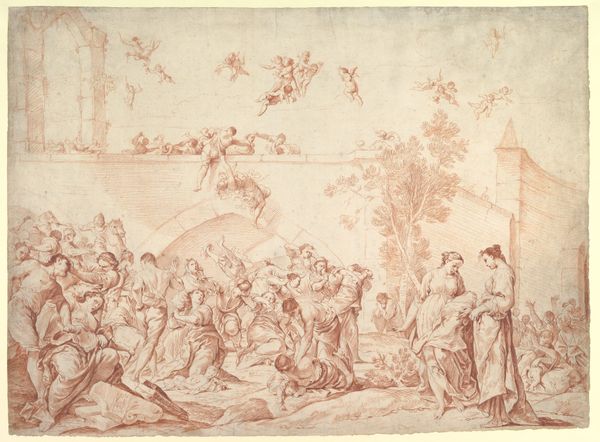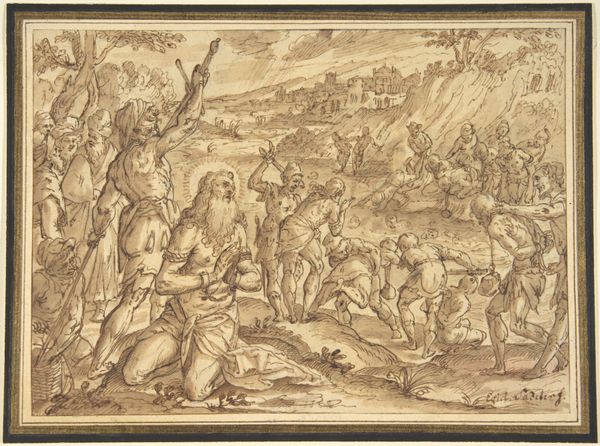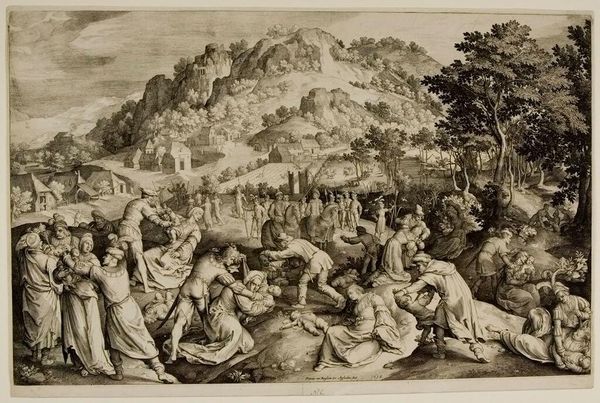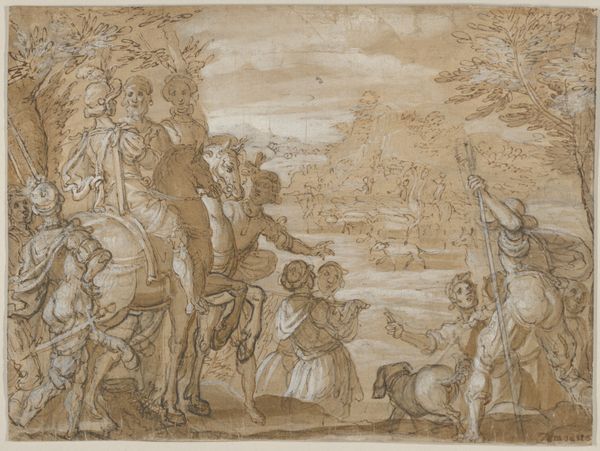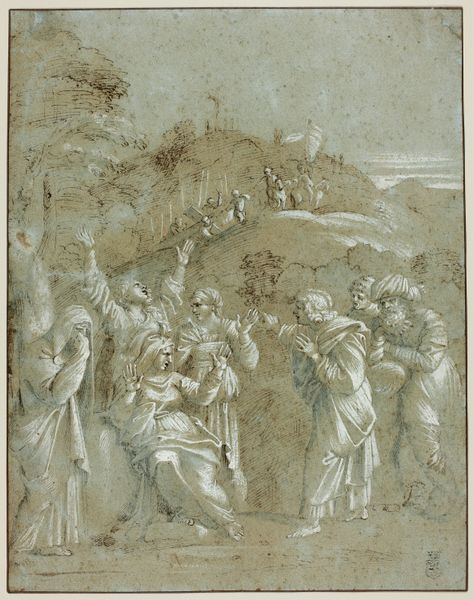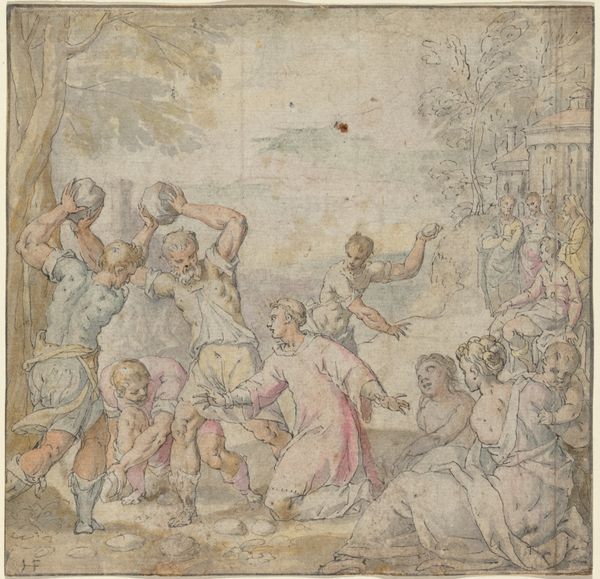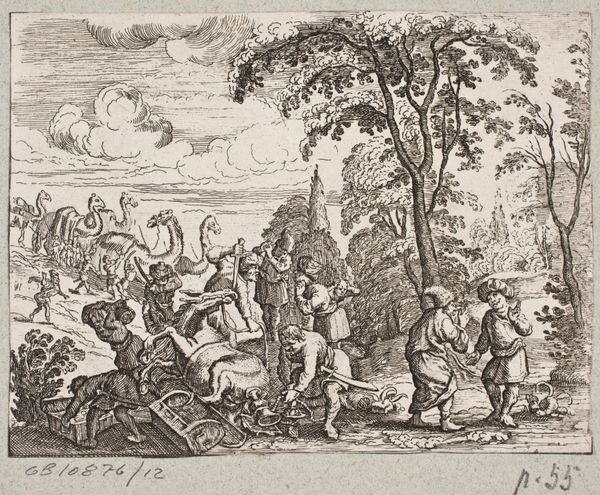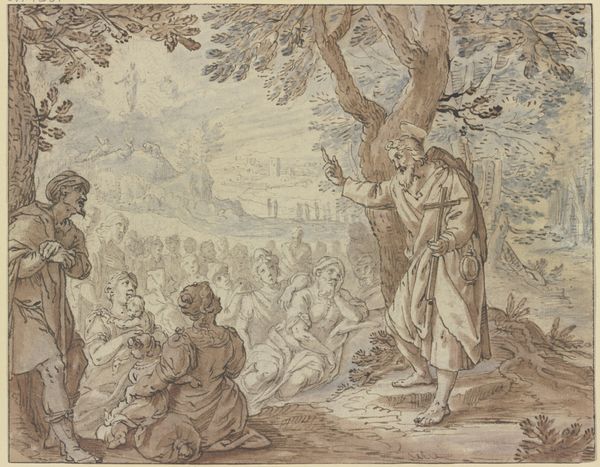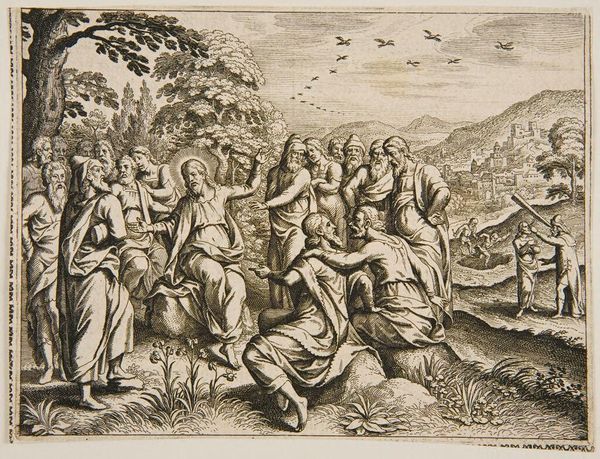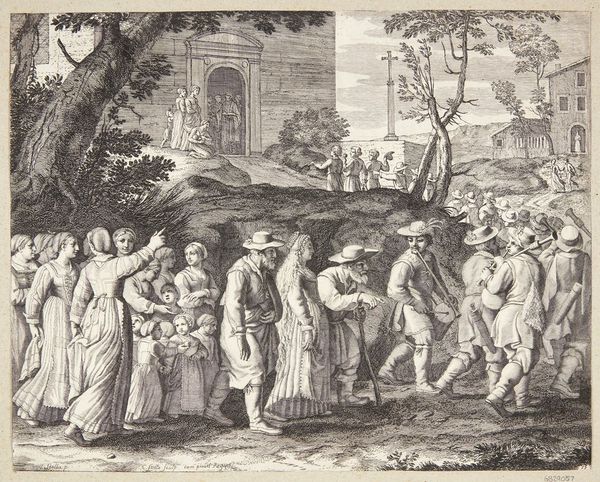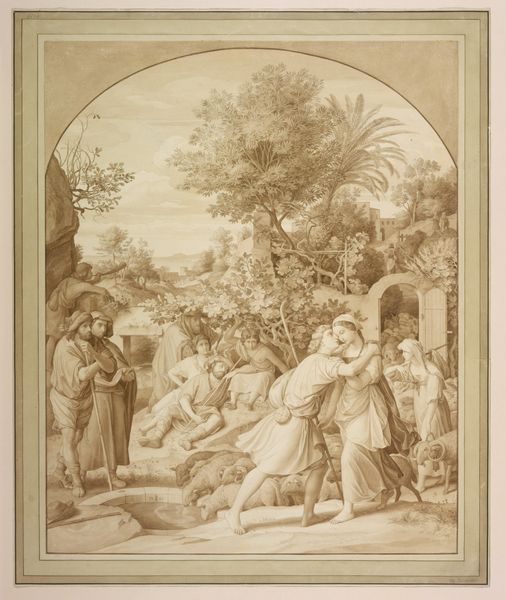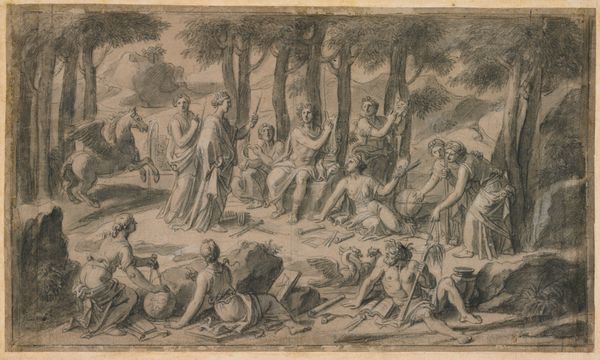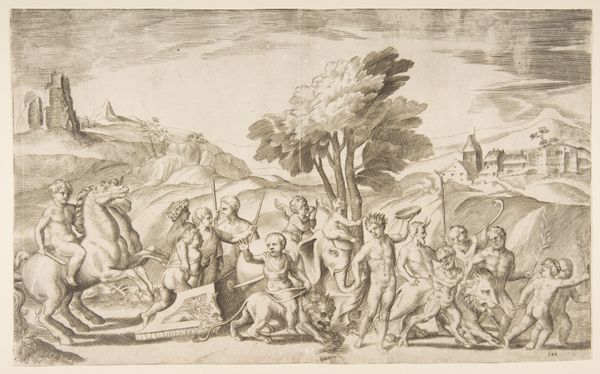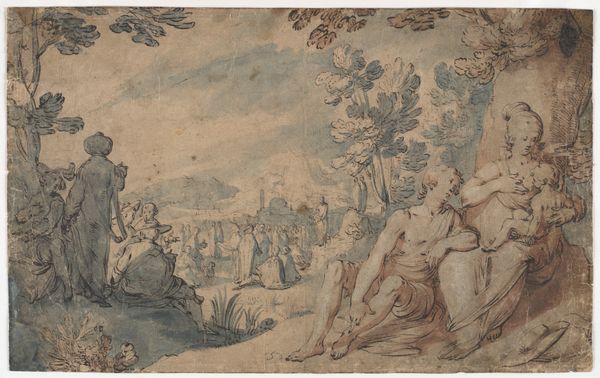
painting, ceramic
#
painting
#
ceramic
#
men
#
genre-painting
#
history-painting
#
decorative-art
#
italian-renaissance
Dimensions: Overall (confirmed): 1 × 24 1/2 × 17 1/2 in. (2.5 × 62.2 × 44.5 cm)
Copyright: Public Domain
Editor: We’re looking at Bartolomeo Terchi's "Moses and the Tablets of the Law," made between 1715 and 1725. It's a ceramic painting and it is at the Metropolitan Museum of Art. I find it very expressive – all those gestures! What do you see in this piece? Curator: The composition is remarkable. Notice how Terchi divides the plane into distinct zones through figure placement and color orchestration. Observe the contrasting groupings and use of ochre against blues. Editor: Are those groupings intended to show the reception of the Tablets? Some figures appear very excited while others hang back. Curator: Precisely. Consider the balance between the active and passive figures. The painter is certainly presenting reactions, but look closer. Is it just reception, or perhaps a more layered, complex narrative conveyed through their positioning, their individual lines and contours, that ultimately leads the viewer's eye from left to right? What do you think is most accentuated here, the emotion or perhaps the human form? Editor: Now that you mention it, the human form is striking. There are multiple iterations of similar poses repeated throughout the crowds. The painterly quality almost obscures what are likely similar lines beneath. Curator: Yes! And further consider the texture of the medium, ceramic. The effect of light on the glossy surface introduces movement into the image and unifies its forms. This interplay, from form to emotion to execution to medium… fascinating. Editor: I never would have noticed those patterns and that tension on my own. The focus on material and composition brings a totally new understanding of the painting's affect. Curator: It reveals Terchi's masterful control of formal elements, yes. This detailed visual inspection enhances and even supersedes the artwork's explicit thematic or historic import. We can analyze the painting like this or other examples in different styles or forms. It’s all the same, isn't it?
Comments
No comments
Be the first to comment and join the conversation on the ultimate creative platform.
